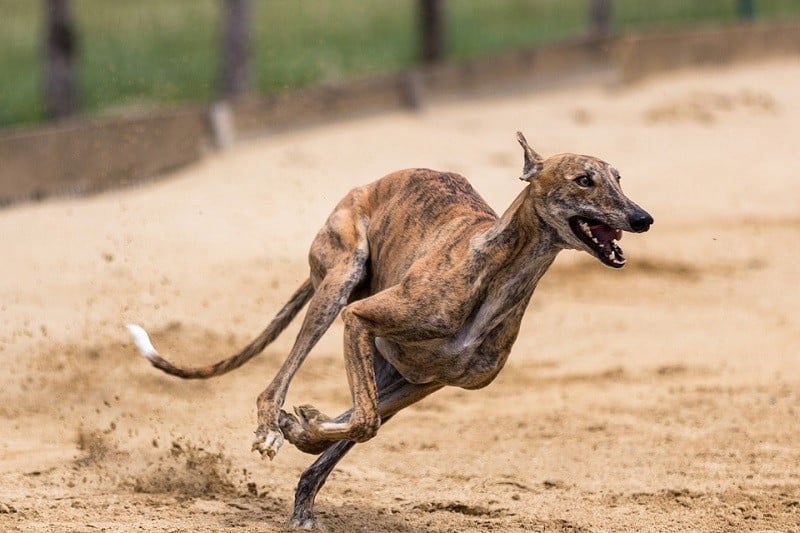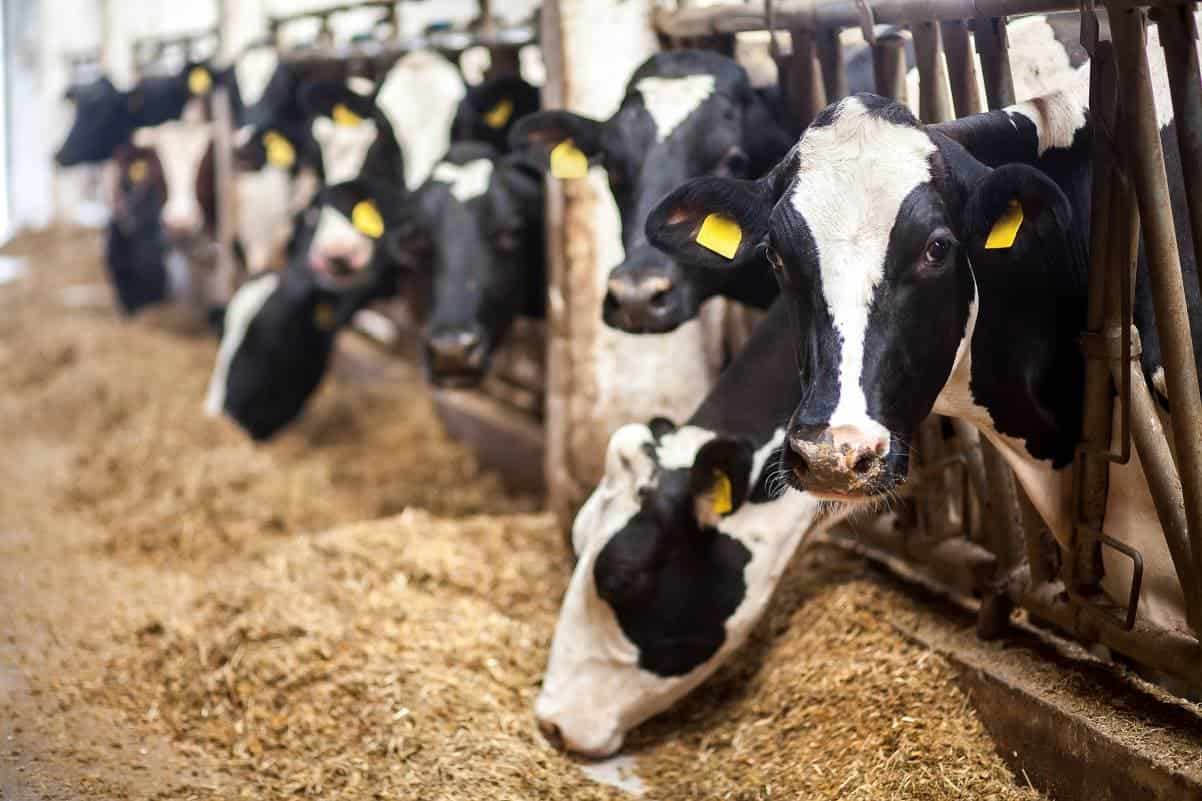Note: This article’s statistics come from third-party sources and do not represent the opinions of this website.
Animal abuse is never an easy subject to discuss or even think about, especially when you have pets of your own. However, the act of abusing animals is, sadly, a more common occurrence than most people realize. If more people are aware of the kinds of abuse that pets, farm animals, and animals in the entertainment industry experience on a national scale, we can better prevent animal cruelty.
Click to Skip Ahead:
- General Animal Abuse Statistics
- Pet Abuse Statistics
- Abuse in the Animal Entertainment Industry
- Farm Animal Abuse Statistics
- International Animal Abuse Statistics

The 20 Animal Abuse Statistics
- Globally, an animal is abused every minute.
- Passive cruelty towards animals is far more common than active cruelty.
- People who are most likely to abuse an animal are men over 30.
- 75% of abused women who own a companion animal reported their animal was threatened with harm or intentionally harmed by their partner.
- 250,000 animals are victims of unhealthy hoarding environments.
- Roughly 40,000 people are involved in organized dog fights.
- There are more than 10,000 puppy mills in the USA.
- 6.5 million cats and dogs enter shelters annually.
- 27% of cats are euthanized in shelters.
- Pit Bull breeds are the most abused and neglected dogs in the world.
- In circuses, dancing bears are in cages for 90% of their lives.
- Since 1994, more than 60 elephants have died prematurely due to a lack of adequate medical care.
- Dozens of racehorses die each year, with physical stress being the main cause.
- Although dog racing is illegal in 40 states, many Greyhounds are still being abused.
- 97% of all abused animals are farm animals.
- 95% of pigs on farms cannot move naturally.
- Dairy cows live only 25%-33% of their natural lifespan.
- Of the 6 inhabited continents, Asia has the highest rate of animal abuse.
- More than 15 million minks were killed in Denmark for their fur because some tested positive for COVID-19.
- Thousands of exotic animals die in transit each year.


General Animal Abuse Statistics
1. Globally, an animal is abused every minute.
(National Today)
There are many different forms of animal abuse. Millions of animals fall victim to a form of animal abuse each year, and the type of abuse can be life-threatening. Since many people do not think that animals can feel pain or emotion, animal abuse continues worldwide.
2. Passive cruelty towards animals is far more common than active cruelty.
(The Humane League)
Active cruelty is when an animal is harmed intentionally. For example, when a person hits or beats an animal for any reason or forces them to participate in fighting, this is a form of active cruelty. Passive cruelty is when an animal is neglected. Examples of passive cruelty are animals not having enough food or water, being left in poor weather conditions, not being groomed to relieve discomfort, or not providing adequate medical treatment.
3. People who are most likely to abuse an animal are men over 30.
(The Humane Society)
Of the reported cases of animal abuse, the abusers are usually men over the age of 30. This is not to say that people in other age groups or genders do not abuse animals. Sadly, there are many cases of animal abuse that go unreported.
4. 75% of abused women who own a companion animal reported that their animal was threatened with harm or intentionally harmed.
(FBI)
There has been an unfortunate link between abuse victims and their pets. Roughly 75% of women who experienced physical abuse by their partners said that the abuser also threatened to abuse or did abuse their pets. The abusers would use that abuse as a control tactic, and it is not an uncommon practice.
5. 250,000 animals are victims of unhealthy hoarding environments.
(Animal Legal Defense Fund)
Hoarders keep an extremely large number of animals in their homes, often resulting in those animals not getting enough food, water, or medical attention. The number of animals in an inadequate space creates an unhygienic environment for both the animals and the hoarder. This can lead to the animals getting skin infections, eye problems, and other life-threatening issues. More than 70% of animal hoarders in the USA are women.


Pet Abuse Statistics
6. Roughly 40,000 people are involved in organized dog fights.
(The Humane Society)
The violent—and illegal—blood sport of organized dogfighting involves about 40,000 people. While it is hard to get an exact number of dogs affected, the estimate is that thousands of dogs are forced to fight—and often die.
7. There are more than 10,000 puppy mills in the USA.
(The Humane Society)
When unlicensed and unchecked, puppy mills can be abusive places for animals. Female dogs are overbred and kept in unhygienic conditions. Medical treatment, exercise, and proper food are not given to the breeding dogs. There are over 139,000 breeding females in licensed puppy mills, meaning there is an unknown number of females in unlicensed puppy mills.
8. 6.5 million cats and dogs enter shelters annually.
(Humane Pro)
Many people often adopt pets without fully understanding the dedication it takes to raise a pet. Some people also do not get their pets neutered or spayed, resulting in unwanted litters being placed in animal shelters. While some shelters will care for the animals for the duration of their lives, other shelters are “kill shelters.” The animal will be euthanized if not adopted in a certain amount of time, sometimes as short as 5 to 7 days.
9. 27% of cats are euthanized in shelters.
(Humane Pro)
More cats are euthanized in shelters than dogs. Since cats are not considered as playful as dogs are, they are often left longer in shelters. In addition, adult cats are not adopted as often as kittens, so they are usually not considered for adoption when people look for a cat as a pet.
10. Pit Bull breeds are a very misunderstood group of dogs.
(Mi Dog Guide)
Pit Bulls are a very misunderstood breed. Although they are extremely friendly and love people, they are often used in dog fighting because of their strong jaws and muscular bodies. This also gives them a bad reputation as a pet. Some housing contracts forbid renters from owning a Pit Bull, leading the Pit Bulls to be placed in shelters.


Abuse in the Animal Entertainment Industry
11. In circuses, dancing bears are in cages for 90% of their lives.
(Treehugger)
Certain species of bears are forced to “dance” during circus performances. Any time they are not performing, they spend the rest of their days in a small cage. Bears need to roam for exercise. By restricting them, the bears get bored and can start to pace. Bears need mental stimulation, and they do not get that while confined for 90% of their lives.
12. Since 1994, more than 60 elephants have died prematurely due to a lack of adequate medical care.
(Born Free USA)
There have been a series of elephants that had to be euthanized due to many medical problems. Many of those problems could have been prevented with proper medical care early on. Sadly, elephants and other circus animals do not get the help they need.
13. Dozens of racehorses die each year, with physical stress being the main cause.
(The Inquirer)
Since 2010, more than 1,400 racehorses have died. Most of them were terribly injured during training or racing and had to be euthanized, while others simply died while in their stalls. The amount of physical stress racehorses are under is the leading cause of their deaths.
14. Although dog racing is illegal in 40 states, many Greyhounds are still being abused.
(The Humane Society)
Greyhounds can endure physical injury when they are raced, such as broken backs and necks, torn muscles, and dislocations. Some even get electrocuted while on the track. When Greyhounds are not racing, they are often confined to a small cage.


Farm Animal Abuse Statistics
15. 97% of all abused animals are farm animals.
(Last Chance for Animals)
Animals are bred for their meat, eggs, and milk on farms across the USA. Since farming is a business, there is not much consideration about the animal’s physical and mental welfare. The animals are often kept in extremely cramped conditions without fresh air until they are slaughtered.
16. 95% of pigs on farms cannot move naturally.
(World Animal Protection)
To lessen the amount of space needed to keep pigs, they are kept in very tight cages. The cages are so small that the pigs cannot even turn around in them. Most pregnant pigs are kept in those small cages, too.
17. Dairy cows live only 25%-33% of their natural lifespan.
(The Humane League)
Since dairy cows are primarily used for their milk production, they do not reach their natural age of 15-20 years because they are slaughtered once they do not produce as much milk.


International Animal Abuse Statistics
18. Of the 6 inhabited continents, Asia has the highest rate of animal abuse.
(Animals Asia)
Animals in Asia face the most frequent abuse because there are not as many laws that protect animals from abuse in the region. Many exotic animals are also used for entertainment in countries in Asia as well.
19. More than 15 million minks were killed in Denmark for their fur because some tested positive for COVID-19.
(Reuters)
Denmark is already the world’s largest mink exporter, but during the COVID-19 pandemic, they slaughtered a record number of minks because some had tested positive for a mutation of the coronavirus.
20. Thousands of exotic animals die in transit each year.
(National Geographic)
The exotic animal trade is dangerous for many animals. Exotic animals are not kept in appropriate containers when being shipped, resulting in death. These animals also often arrive at their destinations in sickly conditions.


FAQ
How many animals are abused each year in the USA?
Unfortunately, this number is not known. There is no national reporting requirement for animal abuse, so there is no way of knowing the exact numbers. Also, many cases of animal abuse go unreported. (The Humane Society)
What is the most abused animal on the planet?
Farm animals are the most abused animals on the planet due to current farming practices that do not consider the animals’ welfare. Chickens are the most abused of farm animals. (World Animals Voice)
Is killing an animal a crime in the USA?
Yes. There are anti-cruelty laws in all 50 states. But those laws differ based on the state. Punishments can include fines and even jail time. (Alley Cat Allies)
Are there any national animal protection laws in the USA?
The Animal Welfare Act (AWA) is a comprehensive law that protects animals in the USA. It helps protect animals in research, exhibition, and with dealers. The law is not perfect because they have laid out some exceptions to the law, which leaves some animals in certain situations without protection. (Sentient Media)
Where can I report animal abuse?
When in doubt, call 911. You can also reach out to your local animal control agency or animal shelter. The most important thing to do is to say something. Many animal abuse situations get ignored, and then the life of the animal is at risk. You can make these calls anonymously. (Animal Welfare Institute)


Conclusion
Learning about animal cruelty statistics can be overwhelming. People often feel helpless about what they can do to reduce animal abuse. First, be aware of the places that use animals for entertainment. Animals that are used in circuses or sporting events might have unfavorable living conditions. Second, if you suspect an animal is being abused by someone you know, report it. Some animals can end up permanently injured or even dead from abuse. Lastly, eat less meat and dairy. There are harmful farming practices that are being done to the animals, so reducing meat and dairy consumption sends a message to the farming industry.
Animals sometimes need a voice in this world. Being aware of and reporting animal abuse can help make the difference between life and death for many animals.
Related Reads:
- How To Get an Abused Dog To Trust You
- What is National Labrador Retriever Day?
- When Is the Best Time to Get Pet Insurance?
Featured Image Credit: Charlotte Yealey, Pixabay
